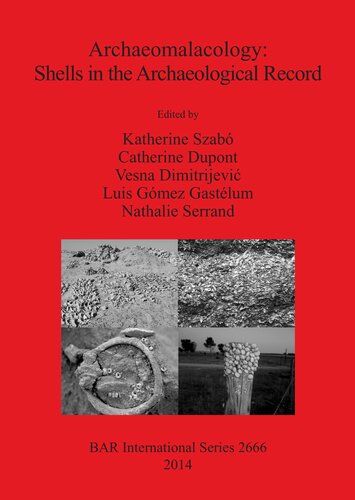

Most ebook files are in PDF format, so you can easily read them using various software such as Foxit Reader or directly on the Google Chrome browser.
Some ebook files are released by publishers in other formats such as .awz, .mobi, .epub, .fb2, etc. You may need to install specific software to read these formats on mobile/PC, such as Calibre.
Please read the tutorial at this link: https://ebookbell.com/faq
We offer FREE conversion to the popular formats you request; however, this may take some time. Therefore, right after payment, please email us, and we will try to provide the service as quickly as possible.
For some exceptional file formats or broken links (if any), please refrain from opening any disputes. Instead, email us first, and we will try to assist within a maximum of 6 hours.
EbookBell Team

5.0
88 reviewsThis publication is the volume is the proceedings of the ICAZ Archaeomalacology Working Group which took place at the 11th International Conference of the International Council for Archaeozoology (ICAZ), held in Paris, France 23rd-28th August 2010. Twenty-three papers are published with evidences of human collection and modification of shells from all over the world and over a large scale of chronology (from Prehistory to Antiquity). The papers are organized in three sub-sessions. The section "Acquisition and use of shell raw materials in prehistory" focuses on patterns of acquisition and use of shell raw materials as well as on the production sequences of shell items in time and space. Specific themes of interest include the exploitation of shells as raw materials in relation to their dietary functions, or choices made to use particular shells along with or as opposed to other raw materials. The section "Shell middens and shells as a food resource" provides a venue to explore the relationships between human groups and molluscan resources and especially encourages the combination of information derived from multiple disciplines, as well as studies that seek to contextualise shell-gathering in a wider socio-economic context. The section "Shells as indicators of palaeoenvironment, site formation and transformation" aims to investigate the potential of the archaeological shell to answer questions not directly related to subsistence or material culture and especially welcomes contributions which mobilise the study of the archaeological shell in relation to modern resource management and environmental change.